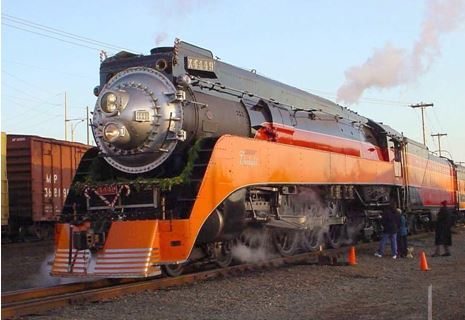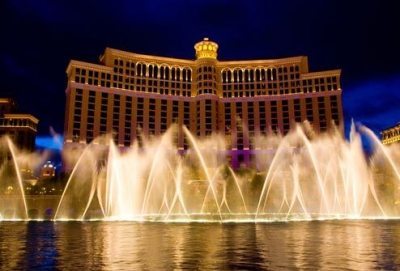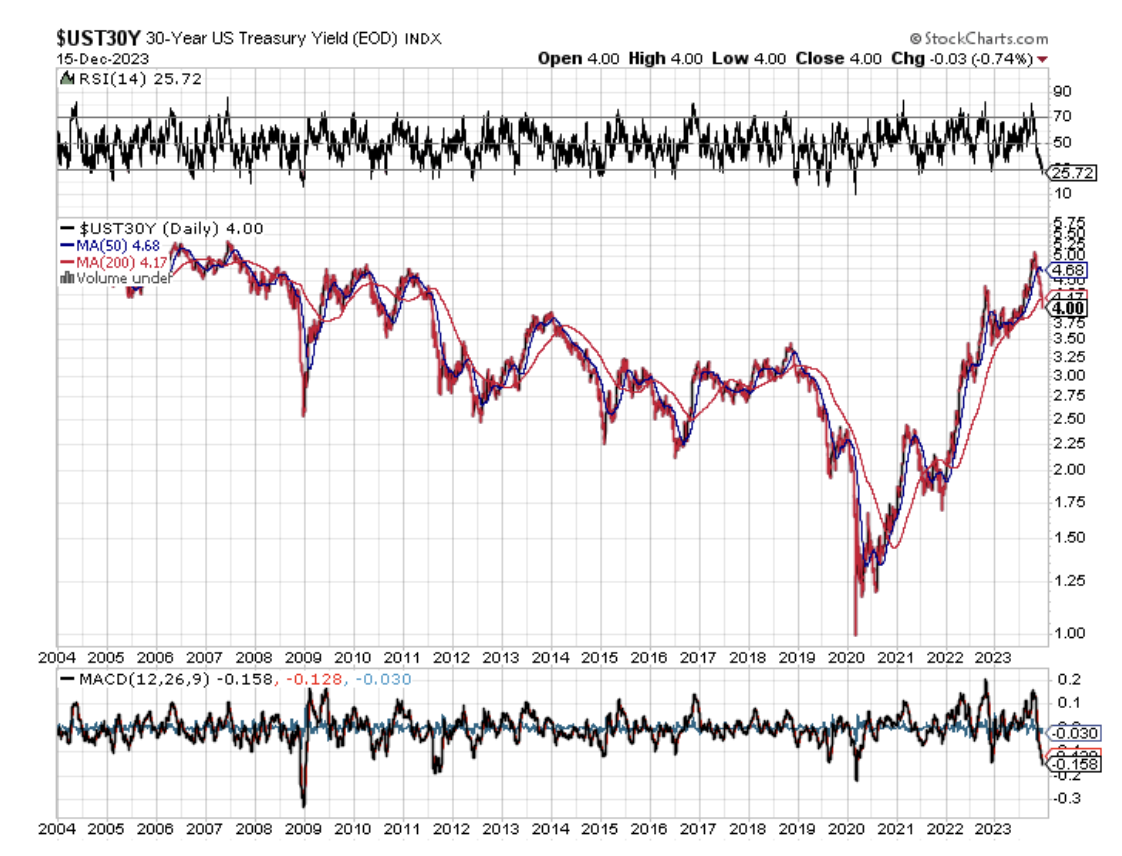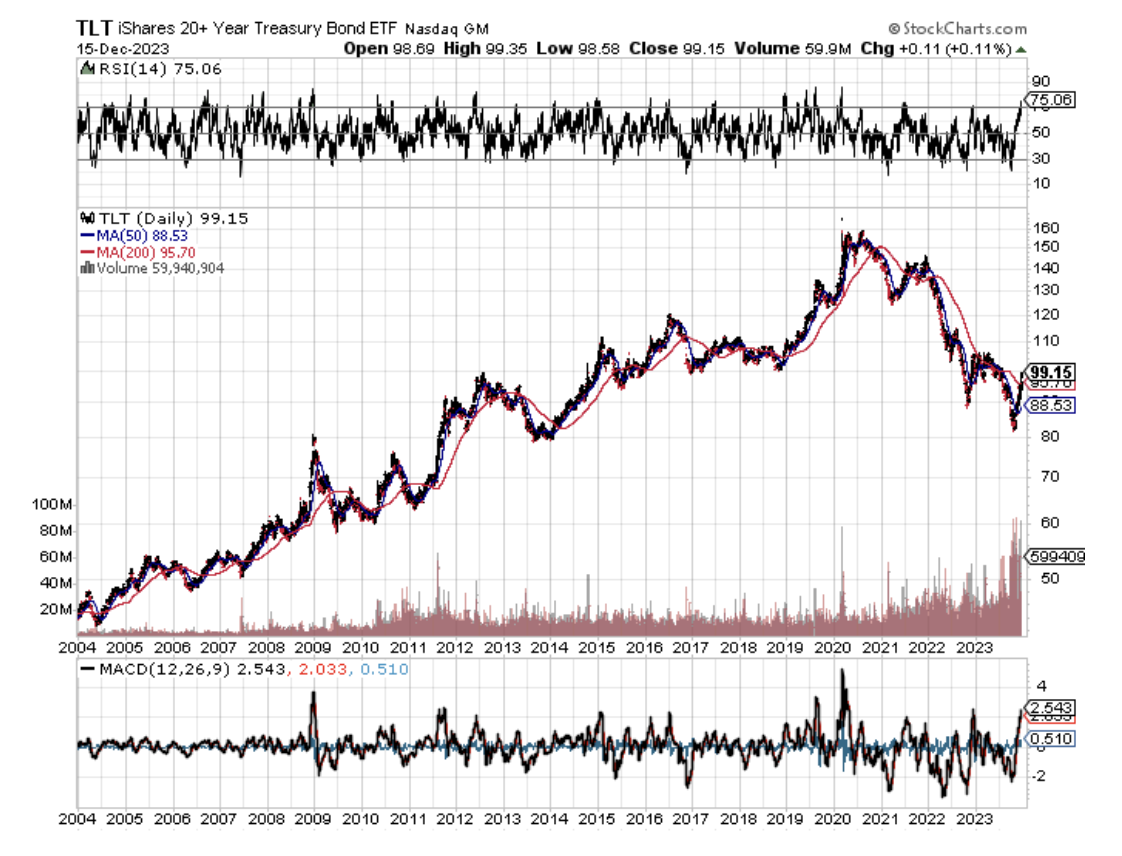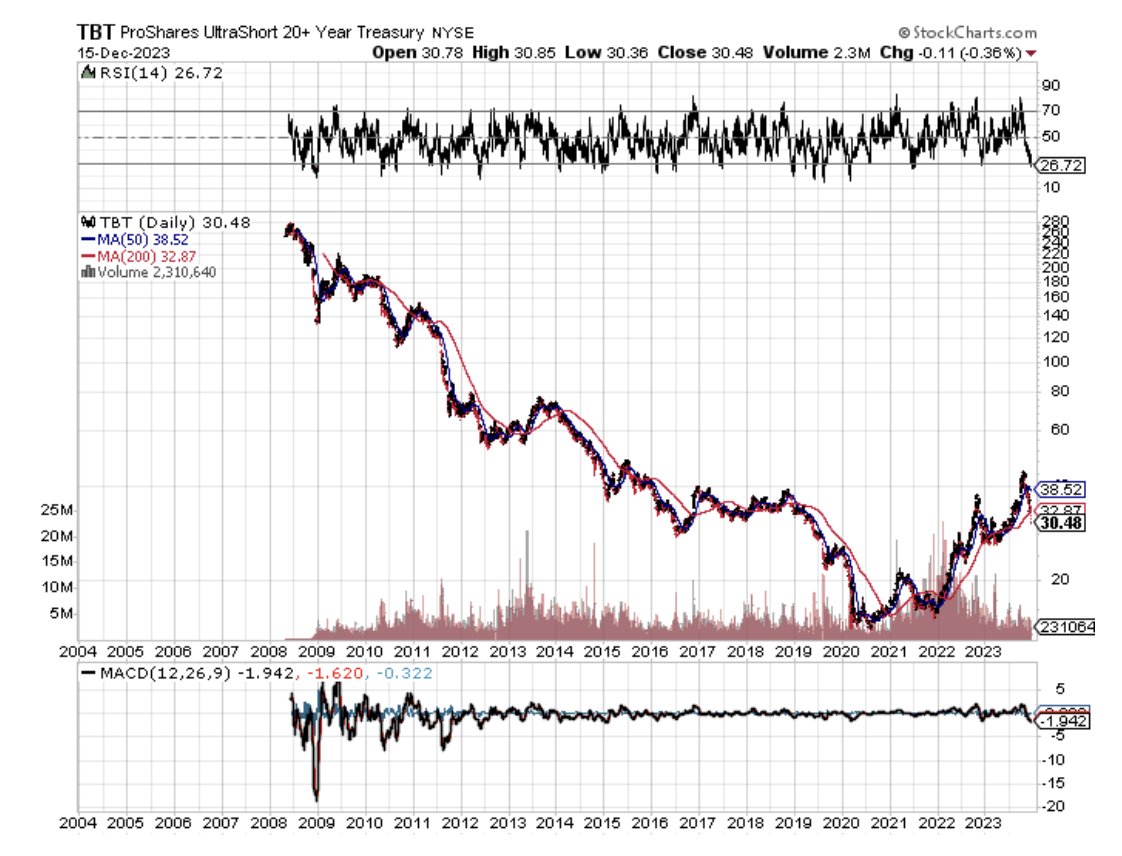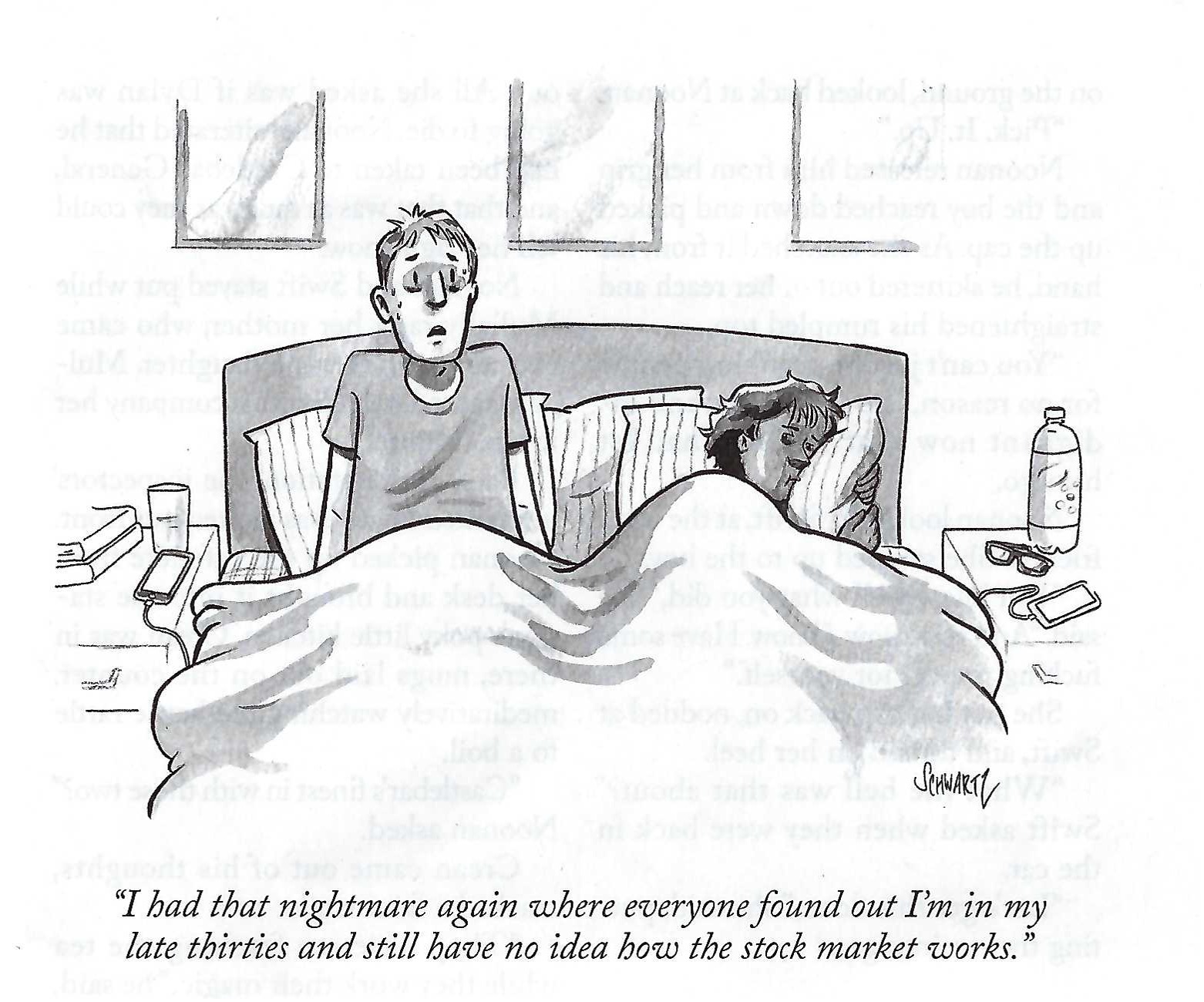
Global Market Comments
December 19, 2024
Fiat Lux
Featured Trade:
(A CHRISTMAS STORY),
(THE U-HAUL INDICATOR)
When I was growing up in Los Angeles during the fifties, the most exciting day of the year was when my dad took me to buy a Christmas tree.
With its semi-desert climate, Southern California offered pine trees that were thin and scraggly at best, and we didn’t want to chop down the view that we had.
So, the Southern Pacific Railroad made a big deal out of bringing trees down from much better-endowed Oregon to supply local holiday revelers.
You had to go down to the freight yard at Union Station on Alameda Street in downtown LA to pick them up.
I remember a jolly Santa standing in a box car with trees piled high to the ceiling, pungent with seasonal evergreen smells, handing them out to crowds of eager, smiling buyers for a buck apiece.
Watching great lumbering steam engines as big as houses whistling and belching smoke was enthralling. We took our prize home to be decorated by seven kids hyped on adrenalin, chugging eggnog.
A half-century later, the Southern Pacific is gone, the steam engines are in museums, anyone going near a rail yard would be mugged or arrested for vagrancy, and Dad long ago passed away. Dried-out trees at Target for $60 didn’t strike the right chord.
So, I bundled the kids into the SUV and drove to the Eastern shore of Lake Tahoe, on the Nevada side, a $10 US Forest Service tree-cutting permit in hand.
Deep in the forest at 8,000 feet, the kids, hyped on adrenalin, made the decision about which perfect 12-footer to take home. I personally chopped it down and dragged it along the ridge, huffing and pugging all the way. I then tied it to the roof and drove us home. Lifting a 200-pound tree gets tougher every year. Thank goodness the kids are getting bigger.
I netted three trees that day, one for each home and one for my oldest daughter. I figure I saved myself $600.
With any luck, these memories will last until the next century, long outlasting me.
Now, the story really comes full circle. I was in Portland, Oregon, a few years ago and had some free time to kill. So, I wandered across the river to the Oregon Rail Heritage Center.
What do I see, but Southern Pacific engine no. 4449, the exact same locomotive I marveled at in LA 65 years ago, all decked out in its glorious orange and red paint.
It was like discovering a long-lost family member. The 435-ton, 72-year-old behemoth was recently rebuilt from the ground up by a dedicated team of similarly aged volunteers to serve as the city’s Polar Express train in 2014.
For the link to the museum, please click here.
Union Pacific still maintains in running condition some of the largest steam engines ever built for historical and public relations purposes.
One, the “Old 844,” once steamed its way over the High Sierras to San Francisco on a nostalgia tour. The 120-ton monster was built during WWII to haul heavy loads of steel, ammunition, and armaments to California ports to fight the war against Japan. The 4-8-4-class engine could pull 26 passenger cars at 100 mph.
When the engine passed, I felt the blast of heat of the boiler singe my face. No wonder people love these things! To watch the video, please click here and hit the “PLAY” arrow in the lower left-hand corner.
Please excuse the shaky picture. I shot this with one hand while using my other hand to restrain my over-excited kids from running onto the tracks to touch the laboring beast.
Merry Christmas
John Thomas
Long Time No See, Old Friend
It is the end of the semester at the University of California, and as a single parent, the unenviable task of retrieving my daughters out of the dorms for the holidays fell to me.
When I arrived, I was stunned to find nothing less than a war zone. Both sides of every street were lined with mountains of trash, the unwanted flotsam and jetsam cast aside by departing students.
Computer desk, embarrassingly stained mattresses, broken lava lamps, and an assortment of heavily worn Ikea furniture were there for the taking. Newly arriving students were sifting through the piles, looking for that reusable gem.
Diminutive Chinese teenagers were seen pushing massive suitcases on wheels down the sidewalk on their way back to Shanghai, Beijing, and Hong Kong. The university attempted to bring order to the chaos by strategically placing dumpsters on every block, but they were rapidly filled to overflowing.
It was all worth it because of the insight it gave me into one of my favorite, least-known leading economic indicators. When I picked up the truck at U-HAUL, the lot was absolutely packed with returned vehicles, and there were more parked on both sides of the streets.
The booking agent told me there is a massive influx of people moving into California from the Midwest and the Northwest, with the result that lots all over the San Francisco Bay Area are filled to capacity.
I love this company because, in addition to providing a great service, they get the first indication of any changes to the migratory habits of Americans. The last time I saw this happen was after the dotcom bust when thousands of tech-savvy, newly unemployed pulled up stakes in the foggy city and moved to Lake Tahoe to work in “the cloud.”
Bottom line: California is enjoying a resurgence of hiring and new economic growth, most likely driven by Artificial Intelligence. This is what the stock market is screaming at us right now.
Want a Great Deal on a Used Lava Lamp?
“This isn’t a choice between vanilla and chocolate, folks! It’s all rocky road: a few marshmallows to get you excited before the elections, but with a lot of nuts to ruin the aftermath,” said the ever insightful Bill Gross at PIMCO.
Global Market Comments
December 18, 2024
Fiat Lux
Featured Trade:
(TESTIMONIAL),
(WHAT EVER HAPPENED TO THE GREAT DEPRESSION DEBT?),
($TNX), (TLT), (TBT)
It's so great having John as my Personal Investment 911. Even when he was navigating the current of his excellent Summit … it took him less than 3 minutes to answer my questions & guide me on my way. I’m underway & making hay … thank you, John.
Andy
Sarasota, Florida
With the national debt now at $36 trillion becoming a hot-button issue once again, it’s time to revisit one of my favorite stories.
When I was a little kid during the early 1950s, my grandfather used to endlessly rail against President Franklin Delano Roosevelt.
The WWI veteran, who was mustard gassed in the trenches of France and drove Red Cross ambulances with Earnest Hemingway in Northern Italy for a lifetime, died in the wool Republican. He said the former President Roosevelt was a dictator and a traitor to his class, who trampled the constitution with complete disregard by trying to pack the Supreme Court.
Republican presidential candidates Hoover, Landon, and Dewey would have done much better jobs.
What was worse, FDR had run up such enormous debts during the Great Depression, feeding the starving, that not only would my life be ruined, but so would my children’s and grandchildren’s lives.
As a six-year-old, this disturbed me deeply, as it appeared that, just out of diapers, my life was already going to be dull, brutish, and pointless.
Grandpa continued his ranting until a three-pack-a-day Lucky Strike non-filter habit finally killed him in 1977. When he was in the trenches, the Army handed them out for free, addicting him for life.
He insisted until the day he died that there was no definitive proof that cigarettes caused lung cancer, even though during his war, they referred to them as “coffin nails.”
He was stubborn as a mule to the end. And you wonder whom I got it from?
What my grandfather’s comments did spark in me a lifetime interest in the government bond markets, not only ours but everyone else’s around the world.
So, whatever happened to the despised, future-destroying Roosevelt debt?
In short, it went to money heaven.
And here, I like to use the old movie analogy. Remember when someone walked into a diner in those old black-and-white flicks? Check out the prices on the menu on the wall. It says, “Coffee: 5 cents, Hamburgers: 10 cents, Steak: 50 cents.”
That is where the Roosevelt debt went.
By the time Treasury bonds issued in the 1930s came due, WWII, Korea, and Vietnam had happened, and the great inflations that followed that wars always brought.
The purchasing power of the dollar cratered, falling roughly 90%. Coffee is now $1.00, a hamburger at MacDonald’s is $5.00, and a cheap steak at Outback costs $15.00.
The government, in effect, only had to pay back 10 cents on the dollar in terms of current purchasing power on whatever it borrowed in the thirties.
Who paid for this free lunch?
Wealthy bond owners who received minimal and often negative real, inflation-adjusted returns on fixed-income investments for three decades.
In the end, it was the risk avoiders who picked up the tab. This is why bonds became known as “certificates of confiscation” during the seventies and eighties.
This is not a new thing. About 300 years ago, governments figured out there was easy money to be had by issuing paper money, borrowing massively, stimulating the local economy, creating inflation, and then repaying the debt in devalued future paper money. The masses loved it.
This is one of the main reasons why we have governments and why they have grown so big. Unsurprisingly, France was the first, followed by England and every other major country.
Ever wonder how the new, impoverished United States paid for the Revolutionary War?
It issued paper money by the bale, which dropped in purchasing power by two-thirds by the end of the conflict in 1783. The British helped, too, by flooding the country with counterfeit paper Continental money.
Bondholders can expect to receive a long series of rude awakenings.
The scary thing is that we will soon enter a new 30-year bear market for bonds that lasts until 2053.
This is certainly what the demographics are saying, which predict an inflationary blow-off in decades to come that could take short-term Treasury yields to a nosebleed 12% high once more.
That scenario has the leveraged short Treasury bond ETF (TBT), which has just cratered from $46 down to $30. Eventually, it will soar to $200, but not now.
If you wonder how yields could get that high in a decade, consider one important fact.
The largest buyers of American bonds for the past three decades have been Japan and China. Between them, they have soaked up over $2 trillion worth of our debt, some 7% of the total outstanding.
Unfortunately, both countries have already entered very negative demographic pyramids, which will forestall any future large purchases of foreign bonds. China has already ceased buying our bonds completely. They are going to need the money at home to care for burgeoning populations of old-age pensioners.
So, who becomes the buyer of last resort? No one, unless the Federal Reserve comes back with QE IV, V, and VI.
There is a lesson to be learned today from the demise of the Roosevelt debt.
It tells us that the government should be borrowing as much as it can right now with the longest maturity possible at these ultra-low interest rates and spending it all.
With real, inflation-adjusted ten-year Treasury bonds now posting negative yields, they have a free pass to do so. Ten-year Treasuries currently yield less than 3.90% versus 5.25% for overnight money.
In effect, the government never has to pay back the money it borrows. But they do have the ability to reap immediate benefits, such as stimulating the economy with greatly increased infrastructure and defense spending.
I’m not the only one who has noticed that most of our major weapons systems are 50 years old, except for the B-52 bomber, which is 72 years old. The Air Force plans to use them until they are 100. Will you feel safe and protected by a plane that is a century old?
If I were king of the world, I would borrow $5 trillion tomorrow and disburse it only in areas that create only domestic US jobs. Not a penny should go to new social programs. Long-term capital investments should be the sole target.
Here is my shopping list:
$1 trillion – new Interstate freeway system
$1 trillion – national defense weapons upgrade
$1 trillion – conversion of our energy system to solar
$1 trillion –investment in Southern border upgrades
$1 trillion – investment in R&D for everything technology-related
The projects above would create 5 million new jobs quickly. Who would pay for all of this in terms of lost purchasing power? Today’s investors in government bonds, half of whom are foreigners.
The bottom line of all this history is that the US government isn’t borrowing too much money, it is not borrowing enough!
How did my life turn out? Was it ruined, as my grandfather predicted?
I did pretty well for myself, as did the rest of my generation, the baby boomers.
My kids did OK, too. One son just got a $2 million, two-year package at a new tech startup, and he is only 34. Another is deeply involved in the tech industry, and my oldest daughter runs Stanford’s online courses. My two youngest girls are getting straight As in Computer Science at the University of California. They complain it’s too easy.
Not too shabby.
Grandpa was always a better historian than a forecaster. But did have the last laugh. He made a fortune in real estate, betting correctly on the inflation that always follows big borrowing binges.
Do you know the five acres that sit under the Bellagio Hotel in Las Vegas today? That’s the land he bought in 1945 for $500. He sold it 32 years later for $10 million.
Not too shabby either.
40 Years of 30-Year Bond Yields
Grandpa’s Impulse Buy for $500
“Babies born in America today are the luckiest crop in history,” said Oracle of Omaha Warren Buffett.
Global Market Comments
December 17, 2024
Fiat Lux
Featured Trade:
(I’M TAKING OFF FOR THE YEAR)
By the time you read this, I will be 200 miles off the west coast of Mexico on the Coral Princess. I’ll be occupying the spacious owner's suite and packing all three of my tuxes (and all my black socks) just to make sure I am never underdressed.
You see, I need a vacation.
I have been working nonstop for decades and desperately need a break. It seems that the older I get, the more I know the more in demand I become. Why quit taking tests when I already know all the answers?
You can tear up your Rolodex card for me, unfriend me on Facebook, designate my email address as SPAM, and block my Twitter account. It won’t do you any good.
If I don’t take some time off, I am going to start raving MAD!
Over the last 17 years, I have worked the hardest in my entire life. And the last year, I have had to work with a bullet wound in my hip courtesy of the Russian Army in Ukraine. Whenever I have free time, I go fight a war. That’s who you want calling your trades.
This year, I have brought in a total return of +75.25%, versus +27% for the S&P 500, far and away among the best of my life and almost certainly yours as well. If you got half of my performance, you beat virtually everyone else in the industry, even the best hedge funds. In other words, I underpromised and over delivered….in spades. That is my way.
If you wonder why I do this, it’s really very simple. Read my inbox, and you would burst into tears.
Every day, I learn tales of mortgages paid off, student loans dealt with, college educations financed, and early retirements launched. I am improving lives by the thousands. That’s far better than any hedge fund bonus could offer me, although I wouldn’t mind owning the Golden State Warriors.
At this late stage in my life, the most valuable thing is to be needed and listened to. If that means becoming a cult leader, that’s fine with me. After all, the last guy to try this route got crucified.
When horrific uncontrollable wildfires broke out in California, I flew volunteer spotter planes for Cal Fire, holding the stick with one hand and a pair of binoculars with the other, looking for trouble and radioing in coordinates, and directing aerial tankers. Nobody can fly wildfires like I can.
I lost access to my Lake Tahoe house when the big fire hit right in the middle of a remodel. All the contractors disappeared, chasing much higher-paying insurance work. At least we now have a 20-mile-wide fire break to the southwest of the house.
I have high hopes for next summer, starting with my seminar at sea across the Atlantic in June, then a trip on the Orient Express to Venice, another Matterhorn climb in July, client visits in Europe for August, flying Spitfires in England in September, and hiking the 170 mile Tahoe Rim Trail in October.
On top of all this, I was on speed dial at the Joint Chiefs and the US Marine Corps. A major? Really? And now I’m a major in two armies, the US and Ukraine. Seems you’re not the only one in desperate need of global macro advice.
So, I will spend the next 16 days reading the deep research, speaking with old hedge fund buddies, the few still left alive, and trying to come up with a game plan for 2025. One thing is certain: we will likely make a lot more money next year, the setup is so clear. Market volatility is about to go through the roof.
Instead of sending out urgent trade alerts, emergency news flashes, and more research than you can read, I’ll be playing Monopoly and Risk, practicing my banjo, and catching up on some classic films.
I already have one trade-on: I’ll watch Elf for the millionth time if the kids watch Gary Cooper’s 1949 Task Force, the history of Naval Aviation (semper fi).
In the meantime, I’ll be running some of my favorite research pieces from the past over the next two weeks. Hot Tips will include the same.
So, everyone, please have some great holidays, spend your monster Tesla profits well, and get well rested.
We have some serious work to do in 2025.
Merry Christmas and Happy New Year,
John Thomas
CEO and Publisher
The Diary of a Mad Hedge Fund Trader
Selling Christmas Trees for the Boy Scouts



